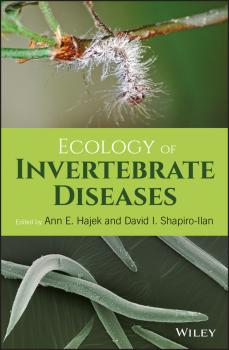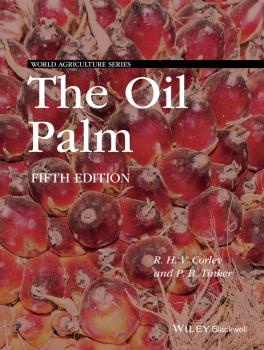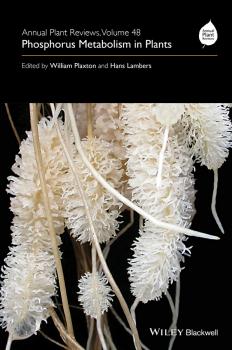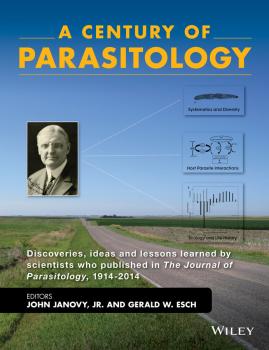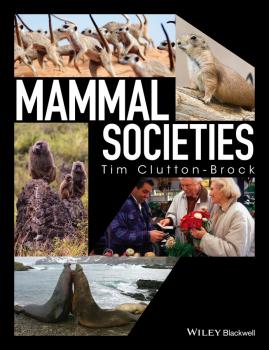Биология
Различные книги в жанре БиологияSugarcane. Physiology, Biochemistry and Functional Biology
Physiology of Sugarcane looks at the development of a suite of well-established and developing biofuels derived from sugarcane and cane-based co-products, such as bagasse. Chapters provide broad-ranging coverage of sugarcane biology, biotechnological advances, and breakthroughs in production and processing techniques. This single volume resource brings together essential information to researchers and industry personnel interested in utilizing and developing new fuels and bioproducts derived from cane crops.
Ecology of Invertebrate Diseases
A rapidly growing interdisciplinary field, disease ecology merges key ideas from ecology, medicine, genetics, immunology, and epidemiology to study how hosts and pathogens interact in populations, communities, and entire ecosystems. Bringing together contributions from leading international experts on the ecology of diseases among invertebrate species, this book provides a comprehensive assessment of the current state of the field. Beginning with an introductory overview of general principles and methodologies, the book continues with in-depth discussions of a range of critical issues concerning invertebrate disease epidemiology, molecular biology, vectors, and pathogens. Topics covered in detail include: Methods for studying the ecology of invertebrate diseases and pathogens Invertebrate pathogen ecology and the ecology of pathogen groups Applied ecology of invertebrate pathogens Leveraging the ecology of invertebrate pathogens in microbial control Prevention and management of infectious diseases of aquatic invertebrates Ecology of Invertebrate Diseases is a necessary and long overdue addition to the world literature on this vitally important subject. This volume belongs on the reference shelves of all those involved in the environmental sciences, genetics, microbiology, marine biology, immunology, epidemiology, fisheries and wildlife science, and related disciplines.
Freshwater Algae. Identification, Enumeration and Use as Bioindicators
This is the second edition of Freshwater Algae; the popular guide to temperate freshwater algae. This book uniquely combines practical information on sampling and experimental techniques with an explanation of basic algal taxonomy plus a key to identify the more frequently-occurring organisms. Fully revised, it describes major bioindicator species in relation to key environmental parameters and their implications for aquatic management. This second edition includes: the same clear writing style as the first edition to provide an easily accessible source of information on algae within standing and flowing waters, and the problems they may cause the identification of 250 algae using a key based on readily observable morphological features that can be readily observed under a conventional light microscope up-to-date information on the molecular determination of taxonomic status, analytical microtechniques and the potential role of computer analysis in algal biology upgrades to numerous line drawings to include more detail and extra species information, full colour photographs of live algae – including many new images from the USA and China Bridging the gap between simple identification texts and highly specialised research volumes, this book is used both as a comprehensive introduction to the subject and as a laboratory manual. The new edition will be invaluable to aquatic biologists for algal identification, and for all practitioners and researchers working within aquatic microbiology in industry and academia.
The Oil Palm
The oil palm is the world's most valuable oil crop. Its production has increased over the decades, reaching 56 million tons in 2013, and it gives the highest yields per hectare of all oil crops. Remarkably, oil palm has remained profitable through periods of low prices. Demand for palm oil is also expanding, with the edible demand now complemented by added demand from biodiesel producers. The Oil Palm is the definitive reference work on this important crop. This fifth edition features new topics – including the conversion of palm oil to biodiesel, and discussions about the impacts of palm oil production on the environment and effects of climate change ? alongside comprehensively revised chapters, with updated references throughout. The Oil Palm, Fifth Edition will be useful to researchers, plantation and mill managers who wish to understand the science underlying recommended practices. It is an indispensable reference for agriculture students and all those working in the oil palm industry worldwide.
The Insects. An Outline of Entomology
Insects represent over half of the planet’s biological diversity. This popular textbook provides a comprehensive introduction to this extraordinary diversity, and places entomology central to the theory and practice of evolutionary and ecological studies. Fully revised, this fifth edition opens with a chapter concerning the popular side of insect studies, including insects in citizen science, zoos and butterfly houses, and insects as food for humans and animals. Key features of insect structure, function, behaviour, ecology and classification are integrated with appropriate molecular studies. Much of the book is organized around major biological themes: living on the ground, in water, on plants, in colonies, and as predators, parasites/parasitoids and prey insects. A strong evolutionary theme is maintained throughout. There is major revision to the chapter on systematics and a new chapter, Insects in a Changing World, includes insect responses to, and the consequences of, both climate change and human-assisted global alterations to distributions. Updated ‘Taxoboxes’ demonstrate topical issues and provide concise information on all aspects of each of the 28 major groupings (orders) of insects, plus the three orders of non-insect hexapods. New boxes describe a worrying increase in insect threats to landscape and commercial trees (including eucalypts, palms and coffee) and explain the value of genetic data, including evolutionary developmental biology and DNA barcoding, in insect biodiversity studies. The authors maintain the clarity and conciseness of earlier editions, and extend the profuse illustrations with new hand-drawn figures. Over 50 colour photographs, together with the informative text and an accompanying website with links to video clips, appendices, textboxes and further reading lists, encourage a deeper scientific study of insects. The book is intended as the principal text for students studying entomology, as well as a reference text for undergraduate and graduate courses in the fields of ecology, agriculture, fisheries and forestry, palaeontology, zoology, and medical and veterinary science.
Annual Plant Reviews, Phosphorus Metabolism in Plants
The development of phosphorus (P)-efficient crop varieties is urgently needed to reduce agriculture's current over-reliance on expensive, environmentally destructive, non-renewable and inefficient P-containing fertilizers. The sustainable management of P in agriculture necessitates an exploitation of P-adaptive traits that will enhance the P-acquisition and P-use efficiency of crop plants. Action in this area is crucial to ensure sufficient food production for the world’s ever-expanding population, and the overall economic success of agriculture in the 21st century. This informative and up-to-date volume presents pivotal research directions that will facilitate the development of effective strategies for bioengineering P-efficient crop species. The 14 chapters reflect the expertise of an international team of leading authorities in the field, who review information from current literature, develop novel hypotheses, and outline key areas for future research. By evaluating aspects of vascular plant and green algal P uptake and metabolism, this book provides insights as to how plants sense, acquire, recycle, scavenge and use P, particularly under the naturally occurring condition of soluble inorganic phosphate deficiency that characterises the vast majority of unfertilised soils, worldwide. The reader is provided with a full appreciation of the diverse information concerning plant P-starvation responses, as well as the crucial role that plant–microbe interactions play in plant P acquisition. Annual Plant Reviews, Volume 48: Phosphorus Metabolism in Plants is an important resource for plant geneticists, biochemists and physiologists, as well as horticultural and environmental research workers, advanced students of plant science and university lecturers in related disciplines. It is an essential addition to the shelves of university and research institute libraries and agricultural and ecological institutions teaching and researching plant science.
Animal Models and Human Reproduction. Cell and Molecular Approaches with Reference to Human Reproduction
Our knowledge of reproductive biology has increased enormously in recent years on cellular, molecular, and genetic levels, leading to significant breakthroughs that have directly benefitted in vitro fertilization (IVF) and other assisted reproductive technologies (ART) in humans and animal systems. Animal Models and Human Reproduction presents a comprehensive reference that reflects the latest scientific research being done in human reproductive biology utilizing domestic animal models. Chapters on canine, equine, cow, pig, frog, and mouse models of reproduction reflect frontier research in placental biology, ovarian function and fertility, non-coding RNAs in gametogenesis, oocyte and embryo metabolism, fertilization, cryopreservation, signal transduction pathways, chromatin dynamics, epigenetics, reproductive aging, and inflammation. Chapters on non-human primate models also highlight recent advancements into such issues as human in vitro fertilization (IVF) and assisted reproductive technologies (ART). This book offers animal scientists, reproductive biology scientists, clinicians and practitioners, invaluable insights into a wide range of issues at the forefront of human reproductive health.
A Century of Parasitology. Discoveries, ideas and lessons learned by scientists who published in The Journal of Parasitology, 1914-2014
Reviews key areas in ecological, medical and molecular parasitology Features essays from some of the world's leading parasitologists Each topic is set in context by featuring a key paper from the Journal of Paraistology over the past 100 years
Ecology of Urban Environments
Provides an accessible introduction to urban ecology, using established ecological theory to identify generalities in the complexity of urban environments. Examines the bio-physical processes of urbanization and how these influence the dynamics of urban populations, communities and ecosystems Explores the ecology of humans in cities Discusses practical strategies for conserving biodiversity and maintaining ecosystem services in urban environments Includes case studies with questions to improve retention and understanding
Mammal Societies
The book aims to integrate our understanding of mammalian societies into a novel synthesis that is relevant to behavioural ecologists, ecologists, and anthropologists. It adopts a coherent structure that deals initially with the characteristics and strategies of females, before covering those of males, cooperative societies and hominid societies. It reviews our current understanding both of the structure of societies and of the strategies of individuals; it combines coverage of relevant areas of theory with coverage of interspecific comparisons, intraspecific comparisons and experiments; it explores both evolutionary causes of different traits and their ecological consequences; and it integrates research on different groups of mammals with research on primates and humans and attempts to put research on human societies into a broader perspective.

